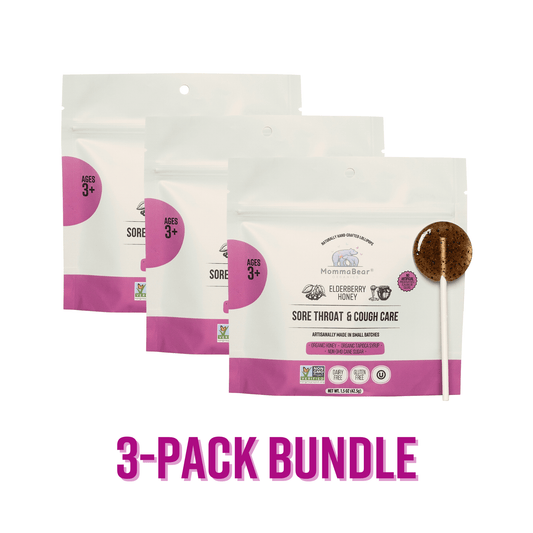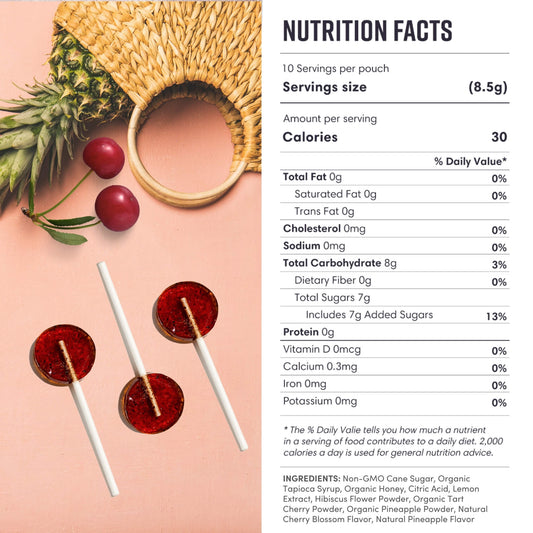I've been thinking a lot about pollination lately. You know, it’s one of those things that’s happening all around us, but we don't really stop to think about it. I read somewhere that a huge chunk of the food we eat, something like a third of it, wouldn't exist without pollinators. But then you hear all this scary stuff about bees and butterflies disappearing, and it feels... big. Overwhelming. But I've been learning that there are things we can actually do, simple things, that can help turn it around. It's not just for big farms, I mean, even in my own little garden. It mostly comes down to a few key ideas:
-
Giving them a place to live: you know, with wildflowers and safe spots to nest.
-
Cutting back on the nasty chemicals: finding smarter ways to deal with pests.
-
Lending a hand when needed: sometimes nature needs a little boost.
-
And just generally making our spaces more diverse and alive.
It’s wild to think that these tiny creatures do so much for us—they make our food better, help farmers, and keep nature humming along. It feels like the least we can do is try to help them out, you know?
How To Attract Pollinators To Your Crops? - The World of Agriculture
Key Techniques for Effective Pollination
Effective pollination is about more than just nature taking its course - it requires thoughtful strategies that support pollinator habitats while maintaining productive agriculture. By creating environments for pollinators, reducing the harmful impact of chemicals, and using assisted methods when necessary, farmers can achieve a balance that benefits both crops and ecosystems.
Key Techniques for Effective Pollination
I used to think you just plant stuff and the bees show up, and that’s that. But it's really not that simple, is it? It feels like we have to be more intentional about it. It’s about finding a balance, I guess. We need our farms to grow food, obviously, but we can do it in a way that doesn't push the pollinators out. It’s about creating little havens for them, being smarter about chemicals, and maybe even stepping in to help when things are out of whack. It’s all connected.
Creating Pollinator-Friendly Habitats
So, this is the part I've been trying to get right in my own yard. It's not just about planting a few pretty flowers and calling it a day. It’s about thinking like a bee, I guess. What do they need all year long? I learned that planting strips of wildflowers is a huge help, and it’s not even that much work. And things like clover... they're amazing. They feed the bees and make the soil better. Double win. I've also been reading about leaving some mess in the garden over the winter, like old plant stems. It feels wrong to not clean everything up, but apparently, that's where some of them sleep. Who knew?
The goal is to have something blooming from spring all the way to fall, so there's always food available. And it's not just food, they need shelter too. I put up a little bee hotel, which was a fun project, and I've left a patch of dirt alone for the ones that nest in the ground. Even a little dish of water with some pebbles in it for them to land on can be a lifesaver on a hot day.
I saw this quote that really stuck with me, it just makes so much sense:
"From decades of habitat restoration work and research we know that when you give pollinators the habitat they need and protect it from pesticide exposure, their populations improve."
But yeah, making a nice home for them is one thing. You also have to make sure you’re not accidentally poisoning them. That’s the other big piece of the puzzle.
Reducing Chemical Interference
Pesticides are a tough one. For so long, it felt like the only way to deal with pests was to just spray everything. But I've been learning so much about how harmful that is for the bees and butterflies. It’s not just about what you spray, but when you spray. Like, doing it really early in the morning or late in the evening when the pollinators aren't out and about. It’s such a simple change, but it can make a huge difference.
There’s this whole idea called Integrated Pest Management, or IPM, which basically means using your brain before you use a chemical. It’s about trying other things first—like bringing in good bugs to eat the bad bugs.
This really puts it in perspective for me:
"Integrated pest management is a decision-making process that coordinates pest biology, site management goals, environmental conditions, consensus building, tools, technology and methods to prevent unacceptable levels of pest damage while minimizing risk to people, property, and the environment, including pollinators."
And it’s things like making sure the spray doesn’t drift all over the place. I read that you should only spray when it's not too windy or too hot. And planting a buffer of grass or shrubs can help catch any spray that does travel. It's just about being more mindful.
I heard someone put it this way, and it really hit home:
"P2's goal is to reduce the impact of pesticides on pollinators. Too many people use pesticides as a first line of defense or as an insurance policy, but if one is insuring for a problem that doesn't exist or is not justified by a demonstrated need, the use of pesticides becomes an insurance policy that asks pollinators to pay the premium."
There are safer options out there, too, like special soaps or traps. Sometimes, when all the natural ways to pollinate aren't quite cutting it, there are other ways to help.
Improving Pollination Through Assisted Methods
Okay, so sometimes, even with our best efforts, nature needs an extra hand. That's where "assisted methods" come in, which sounds super technical, but it’s really just about us stepping in to do the pollinators' job. For some crops, people actually go around with little brushes and pollinate flowers by hand. It sounds tedious, but for things like cacao, it can make a huge difference in how much fruit you get.
Then there’s the more high-tech stuff. I’ve seen videos of these little vibrating wands they use for tomatoes to shake the pollen out, kind of like what a bumblebee does when it buzzes. And now they're even using drones! Little flying robots pollinating orchards. It feels a bit like sci-fi, but apparently, they can get the job done really efficiently and save a ton of money. One trial with tomatoes showed they got 20% more fruit with a robot. Crazy.
But, I mean, this should always be a backup plan, right? Not the main thing. Keeping our natural pollinators healthy and happy is still the best and cheapest way to go in the long run.
Benefits of Responsible Pollination Practices
When you start digging into all this, you realize it's not just about "saving the bees." It has these real, tangible benefits that affect our food, our environment, and even our bank accounts. It all comes back to making our farms and gardens healthier places.
Boosting Crop Yields and Quality
It just makes sense—if you give pollinators a good home and don't poison them, your plants are going to do better. I saw that something like 75% of the world's crops rely on them. I read this crazy stat about almond orchards in the U.S. where just having honey bees around boosted the amount of almonds they got by a ton. Same for pears, they grew bigger and made the farmers more money. It's a direct link. Better pollination equals more food, and better quality food at that.
Preserving Biodiversity
This is the part that gets me. It’s not just about our crops. So many of the world's flowering plants need animal pollinators to reproduce. Without them, whole ecosystems could just… fall apart. And having lots of different kinds of pollinators is super important. Some bees, like bumblebees, don't mind the cold, while others prefer the heat. That variety makes the whole system more resilient. It’s like having a team where everyone has a different skill. Wild bees are amazing too; they work alongside honeybees and make them even better at their jobs. Pollinators are also like little canaries in a coal mine—if they start struggling, it’s a sign that something is wrong with the environment as a whole.
Economic Value of Pollination Services
The money side of this is just staggering. In the U.S. alone, the work that managed bees do for our crops is worth billions of dollars every year. Billions! For free!
When you look at specific examples, it’s even clearer. I saw a story about cotton farmers who saw their productivity jump by almost 70% just by making their farms more pollinator-friendly. And another one where bats were kept away from a fruit called pitaya, and the harvest was way smaller and not as sweet.
Here's a little breakdown I saw that makes it super clear:
| Crop (Region) | Yield Impact | Quality Improvement | Economic Benefit |
|---|---|---|---|
| Almond (USA) | 60% fruit set; 20% kernel yield | Enhanced kernel quality | Higher market prices |
| Cotton (Sub-Saharan Africa) | Increase from 37% to 62% yield | Heavier seeds | ~68% productivity increase |
| Pear (USA) | Improved fruit set | 7% larger fruit size | $400 per hectare net income increase |
| Strawberry (Germany) | Consistent yields | Premium quality | 54.3% commercial value increase |
It’s just proof that taking care of nature isn't just a nice thing to do; it's a smart business decision. It makes farming more stable and supports whole economies.
sbb-itb-e1a023f
Practical Steps for Implementing Better Pollination
Okay, so all this is great in theory, but what can we actually do? It can feel overwhelming, but there are some really practical, hands-on things that make a real difference, whether you have a huge farm or just a little backyard.
Farm-Level Strategies
If I had a bigger piece of land, here’s what I’d be looking at. First, mixing up the crops you plant every few years. It messes with pests and makes the soil so much healthier. Planting hedgerows is another big one—they’re not just pretty fences; they’re highways and homes for pollinators.
Putting a little pollinator garden near your crops can actually increase how much you harvest. You just have to make sure it’s close enough for the bees to travel back and forth. Agroforestry, where you mix trees in with your crops, is another cool idea. It’s like creating a mini-forest that produces food. And even just having a small pond or a low spot where water can collect gives them a place to drink.
Using good bugs to fight bad bugs instead of spraying everything is a huge part of it, too. I love this thought:
"By incorporating diverse plant and animal species, you'll create a more resilient, productive and sustainable farming system that works with nature rather than against it." - FarmstandApp
This is how I usually remember it:
| Farming Practice | Bee Protection Level | Crop Yield Impact | Implementation Complexity | Cost Effectiveness |
|---|---|---|---|---|
| Organic Pest Management | High | Positive | Moderate | Medium |
| Bee-Friendly Seed Treatments | Medium | Neutral | Easy | High |
| Responsible Insecticide Use | Medium | Positive | Moderate | Medium |
| Pollinator-Friendly Crop Rotation | High | Positive | Moderate | High |
| Wildflower Margins | High | Neutral | Easy | Medium |
| Integrated Beekeeping | High | Positive | Difficult | High |
Community and Policy Collaboration
This isn't something one person can do alone. Getting your neighbors involved is huge. Imagine if a whole street planted native flowers—you'd create a massive pollinator corridor! Community beekeeping programs are also such a cool way to get people involved and learning.
And we can talk to local businesses, you know? Ask the garden center to stock more native plants, or encourage restaurants to buy from farms that are doing things the right way. Pushing for local policy changes, like limiting pesticide use in parks, is another powerful step. It all adds up. I really like this encouragement from the Xerces Society:
"Communities across the country are joining together to protect pollinators... The Xerces Society is excited to help your community protect pollinators." - Xerces Society
Even just being a "citizen scientist"—counting bees with an app or helping monitor habitats—can make a big difference. It helps us see what's working and what's not.
Seasonal Maintenance and Monitoring
This is the long-game part. You can’t just plant some flowers and walk away. In the spring, you have to remember to water everything. And weeding, especially in the first year, is so important. I’ve learned that the hard way.
This is a great little tip I got from a gardener:
"Try walking through a part of your planting every day. This helps you notice weeds, water needs, and disease before anything gets out of hand." - Eva, Lawns to Legumes coach
When it comes to mowing, I’m trying to be more thoughtful. Waiting until fall or winter and not mowing everything at once leaves some shelter for the bugs. And just watching your garden helps you learn so much. You see which flowers the bees love and which ones they ignore. It helps you plan for next year.
This also makes so much sense:
"The more you see these plants, the more knowledgeable you become in understanding what they are and if they are something you don't want." - Tim, Lawns to Legumes coach
And you have to be so careful with any kind of spray. I try to spot-treat weeds instead of spraying the whole area, and I never, ever spray when flowers are blooming. It takes patience, for sure. Native plants can take a few years to really get going. But it’s worth it.
Conclusion: The Future of Pollination Practices
So yeah, from making our own backyards a little wilder to being smarter about chemicals, it feels like every little thing we do matters. It's not just some abstract goal; it's about our food and our world.
Key Takeaways
Here’s what I keep coming back to:
-
It doesn’t matter how big or small your space is. Every single action helps. Just planting a few things or cutting back on sprays is a win for pollinators.
-
We need to think beyond just honeybees. Supporting all the different kinds of wild pollinators is just as crucial. That means giving them food and shelter all year round.
-
For farmers, this stuff really pays off. Things like planting cover crops or adding hedgerows don’t just help the ecosystem; they can actually lead to better harvests.
-
We can all do our part as a community. Planting wildflowers in public spaces or mowing less often are small things with a big impact.
-
Working together is everything. When we all team up—farmers, gardeners, scientists—we can make such a bigger difference than any of us could alone.
-
And our choices as shoppers matter, too. Buying local, sustainable food sends a powerful message.
Looking Ahead: New Developments in Pollination
While all these natural methods are amazing, some of the new technology I’m hearing about is pretty wild. Drones are actually being used in orchards to pollinate apple trees, and it’s working! Almond growers have seen big improvements, too.
I like what this researcher said about it:
"We can do a lot with technology, and drones are a viable option for pollination. We can't solve for every risk with technology, but if drones can be used for mitigating risk in pollination, why not." - Katja Hogendoorn, Research Fellow at the University of Adelaide
The idea isn't to replace bees, but to help out when they can't work, like on cloudy days or really early in the morning. And there are these new certification programs that teach farmers the best ways to create habitats, which is cool. We're getting so much better at tracking pollinator populations with things like tiny cameras and DNA testing.
It seems like the future is all about blending the old ways with the new tech. As one person put it so well:
"Technology is advancing, but nature will always remain superior"
The best path forward is probably a mix of both. We’re already seeing it work. There are programs where setting aside just a quarter of a field for pollinator habitats has more than doubled how much food they can grow. It’s amazing.
So whether you’re a farmer trying something new, a neighbor planting a garden, or just someone choosing what to buy at the store, what you do really does shape the future. It all helps build a world where we work with nature, not against it.
...It really makes you wonder what else we've been taking for granted, you know? What other tiny, invisible things are holding our world together? It’s a lot to think about.
FAQs
What are some affordable ways for small-scale farmers to promote sustainable pollination?
Honestly, one of the best and cheapest things you can do is just work with what nature gives you. Letting native wildflowers grow or leaving a patch of your land wild gives bees and other bugs food and a place to live. It doesn't cost a thing. Simple stuff, like tilling the soil less, planting cover crops that flower, or letting shrubs grow along a fence line, can also make a huge difference without breaking the bank. It's all about making small tweaks that help pollinators thrive, and often, that ends up helping your crops, too.
How can communities in urban areas support pollinators and create pollinator-friendly spaces?
Oh, there's so much we can do in cities! The easiest thing is just to plant native flowers that bloom at different times of the year. That way, there's always something for pollinators to eat. You can do it in a community garden, a window box, or even just a pot on your balcony. Every little bit helps.
Beyond that, just trying to use fewer pesticides is huge. You can also put up little "bee hotels" for them to nest in or leave some parts of a park a bit wild and unmowed. Things like green roofs and pollinator pathways are bigger projects, but they're amazing for connecting habitats across a city. It’s all about creating little oases for them in the middle of all the concrete.
How does reducing pesticide use help pollinators and improve crop production?
Cutting back on pesticides is a game-changer for pollinators. So many chemicals, especially insecticides, are really toxic to them. When their populations drop, there aren't enough of them to pollinate all the crops that rely on them, which can be a disaster for food production.
So, when farmers use fewer pesticides, pollinator populations can bounce back and thrive. More pollinators means better pollination, which often leads directly to more fruit and vegetables. It's a win-win. You get a healthier environment buzzing with life, and you get more productive farms. It just makes sense.
Related posts
- How Organic Lollipops Help Allergies
- How Organic Lollipops Help Digestive Health
- How Plant-Based Lollipops Support Everyday Wellness
- Ultimate Guide to Ethical Ingredient Sourcing










